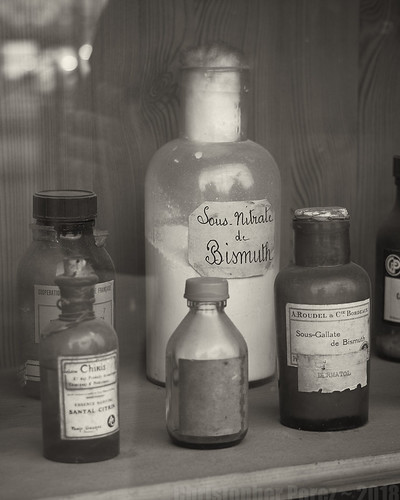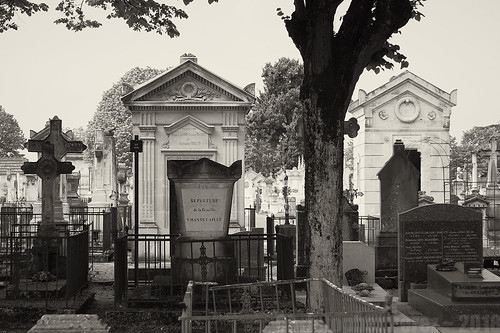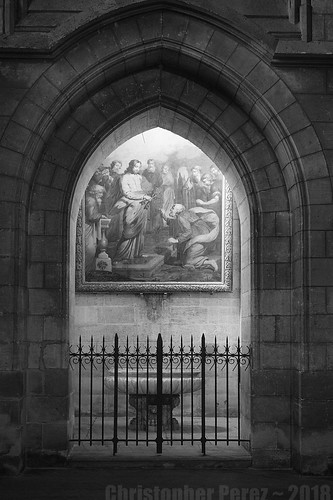In a prior post I shared my updated understanding of how to make digital black and white images look like beautiful old silver halide prints.
For this post I would like to share a few images that illustrate what is possible. Since I used multi-coated AF optics, I needed to preserve the highlights in the way I described in that earlier post.
Here is a window scene. I used a Sony NEX-5T and Sony 55-210mm f/4.5-6.3 SEL OSS. The image was grabbed "on the fly" as my wife and I walked some of the backstreets of Bordeaux.

In the following image I wanted to see how much dynamic range the old Sony NEX-5T sensor could provide. Using the Sony 55-210mm f/4.5-6.3 SEL OSS I was able to isolate something interesting from a complex environment.
What surprises me is how much "luminosity" is retained in this midday scene in a Bordeaux cemetery. The highlights are creamy beautiful. The shadows show good detail. I did no burning or dodging. This was created taking the out of camera file and applying the "glow" process.
I see that pure white and pure black aren't important. Simple darks and lights and their relationship to each other, those are what can make an image "work". As a test of this idea while processing this image I put the blacks as pure black and the whites as pure white. It just didn't look right. The sense of "luminosity" and warmth and "glow" was lost. Welcome, I said to myself, to the world of grey.

Lastly, here is a quiet little scene, this time from inside a church in Bordeaux. I used a Sony A5000 and a pretty little Sigma 30mm f/2.8 EX DN E. In processing I burned-in the stone arch to help make the light from baptismal font room become the central point of attention. And since I felt it was too grey I used the contrast slider then to help make the image "pop".
It was pretty simple, actually. A light touch on the sliders and image processing functions while following the "glow" process brings this to life.

For this post I would like to share a few images that illustrate what is possible. Since I used multi-coated AF optics, I needed to preserve the highlights in the way I described in that earlier post.
Here is a window scene. I used a Sony NEX-5T and Sony 55-210mm f/4.5-6.3 SEL OSS. The image was grabbed "on the fly" as my wife and I walked some of the backstreets of Bordeaux.

In the following image I wanted to see how much dynamic range the old Sony NEX-5T sensor could provide. Using the Sony 55-210mm f/4.5-6.3 SEL OSS I was able to isolate something interesting from a complex environment.
What surprises me is how much "luminosity" is retained in this midday scene in a Bordeaux cemetery. The highlights are creamy beautiful. The shadows show good detail. I did no burning or dodging. This was created taking the out of camera file and applying the "glow" process.
I see that pure white and pure black aren't important. Simple darks and lights and their relationship to each other, those are what can make an image "work". As a test of this idea while processing this image I put the blacks as pure black and the whites as pure white. It just didn't look right. The sense of "luminosity" and warmth and "glow" was lost. Welcome, I said to myself, to the world of grey.

Lastly, here is a quiet little scene, this time from inside a church in Bordeaux. I used a Sony A5000 and a pretty little Sigma 30mm f/2.8 EX DN E. In processing I burned-in the stone arch to help make the light from baptismal font room become the central point of attention. And since I felt it was too grey I used the contrast slider then to help make the image "pop".
It was pretty simple, actually. A light touch on the sliders and image processing functions while following the "glow" process brings this to life.

No comments:
Post a Comment